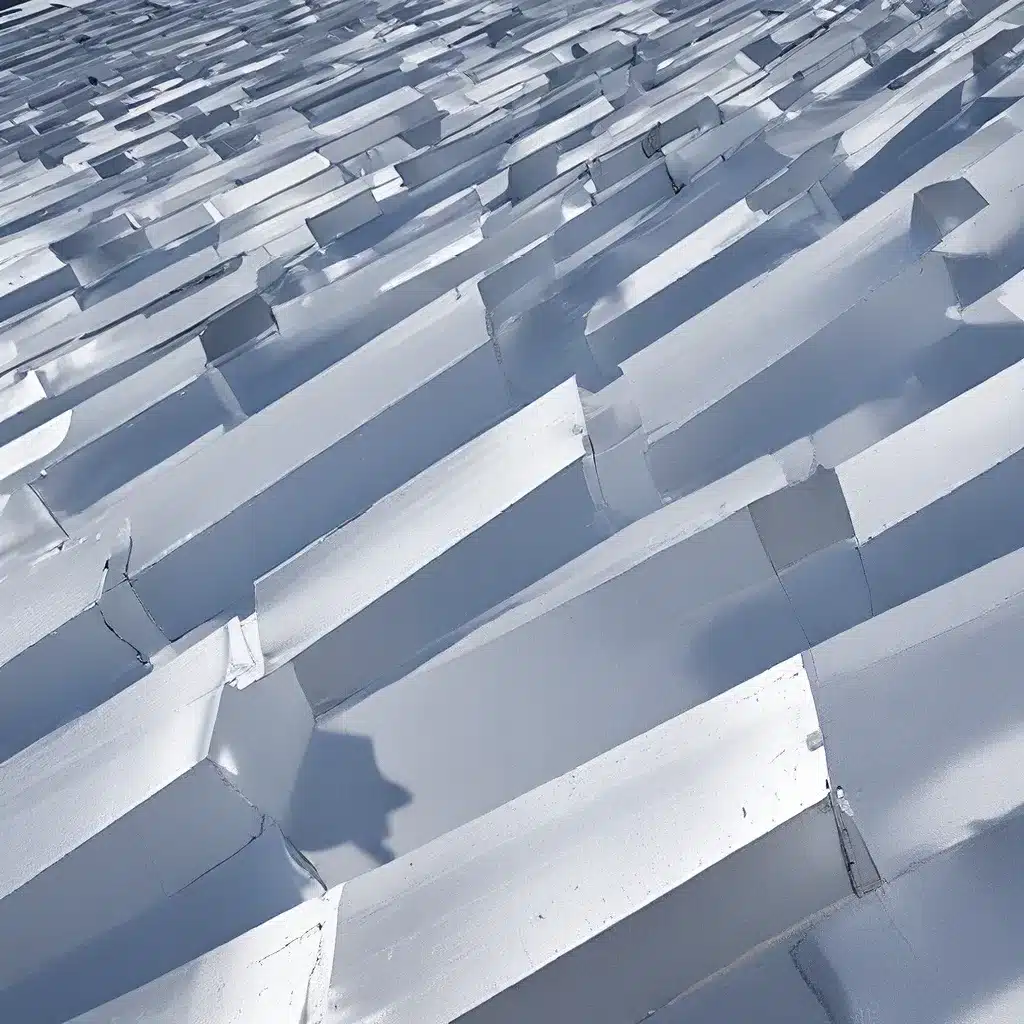
As the relentless heat of the summer sun beats down on our cities, we find ourselves in a desperate search for effective ways to stay cool and comfortable. Well, my friends, I’m here to tell you that the solution might be right over our heads – in the form of reflective roofing.
Let me paint you a picture: Imagine a world where the scorching temperatures that have us all cranking up the AC don’t make our energy bills skyrocket. A world where the sweltering heat doesn’t leave us drenched in sweat and searching for the nearest shady spot. Sound too good to be true? Think again, because reflective roofing is about to revolutionize the way we beat the heat.
The Urban Heat Island Effect: A Sizzling Challenge
Before we dive into the magic of reflective roofing, let’s take a moment to understand the challenge we’re up against. You see, our cities have become veritable heat traps, thanks to something called the urban heat island effect. This phenomenon occurs when pavement, buildings, and other urban surfaces absorb and radiate heat, causing the cityscape to be significantly warmer than the surrounding areas.
It’s like our cities have turned into giant ovens, with temperatures that can soar up to 20°C (36°F) higher than nearby rural areas. And let me tell you, this isn’t just an inconvenience – it’s a serious health risk, especially for vulnerable populations like the elderly and those with pre-existing conditions.
Reflective Roofing: A Cooling Powerhouse
Enter the knight in shining armor (or, in this case, the roof in shiny white): reflective roofing. This innovative solution is designed to bounce back solar radiation and reduce surface temperatures, effectively counteracting the urban heat island effect.
Here’s how it works: Conventional roofs and pavements tend to absorb and radiate heat, exacerbating local temperatures. But reflective roofs, with their lighter and more reflective materials, reflect that heat back into the atmosphere, keeping the building and its surroundings cooler.
Studies have shown that cool roofs can reduce outdoor temperatures by an average of 1.2°C (2.2°F) across an entire city, and up to 2°C (3.6°F) in some areas. That’s a significant difference that can make a huge impact on our comfort and well-being.
But the benefits of reflective roofing don’t stop there. By keeping buildings cooler, they also reduce the energy demand for air conditioning, which can make a big difference in our wallets and our environmental footprint. And let’s not forget the aesthetic appeal – these sleek, light-colored roofs can actually enhance the overall look and feel of a neighborhood.
Comparing Cooling Strategies: Reflective Roofs Come Out on Top
Now, you might be wondering, “Sure, reflective roofing sounds great, but how does it stack up against other heat mitigation strategies?” Well, recent studies have shown that when it comes to reducing outdoor urban temperatures, reflective roofs are the clear winner.
Let’s take a look at how some other popular strategies measure up:
| Cooling Strategy | Average Temperature Reduction |
|---|---|
| Reflective Roofs | 1.2°C (2.2°F) |
| Green Roofs | 0°C (0°F) |
| Urban Greening (Tree Planting) | 0.3°C (0.5°F) |
| Solar Panels | 0.5°C (0.9°F) |
As you can see, cool roofs outperform all other commonly proposed strategies when it comes to cooling the urban environment. And while some of the other options, like urban greening and solar panels, can certainly contribute to heat mitigation, their impact simply pales in comparison to the powerhouse that is reflective roofing.
Putting Reflective Roofing into Practice
Now that we’ve established the impressive cooling capabilities of reflective roofing, you’re probably wondering, “How can I get in on this action?” Well, my friend, the good news is that implementing this technology is easier than you might think.
Many roofing contractors, like the experts at Southern Roofing Co., are well-versed in the installation of reflective roofing systems. These systems can be applied to both new construction and existing buildings, making them a viable option for a wide range of projects.
And let’s not forget the financial incentives. In many regions, governments and utility companies offer rebates and tax credits for homeowners and businesses that make the switch to reflective roofing. So, not only will you be doing your part to combat the urban heat island effect, but you could also see some significant savings on your energy bills.
The Future of Cooling: Reflective Roofing and Beyond
As the planet continues to warm and heatwaves become more frequent and intense, the need for effective heat mitigation strategies has never been greater. And while reflective roofing is a powerful tool in our arsenal, it’s just one piece of the puzzle.
Other innovative solutions, like urban greening, geothermal cooling, and water-based cooling systems, are also emerging as valuable ways to combat the urban heat island effect. And as researchers continue to explore these and other strategies, we’re likely to see even more exciting developments in the years to come.
But for now, I firmly believe that reflective roofing is the low-hanging fruit in the fight against urban heat. It’s a simple, cost-effective solution that can make a real difference in our lives and in the health of our cities. So, what are you waiting for? It’s time to start thinking about how you can beat the heat with a little help from above.